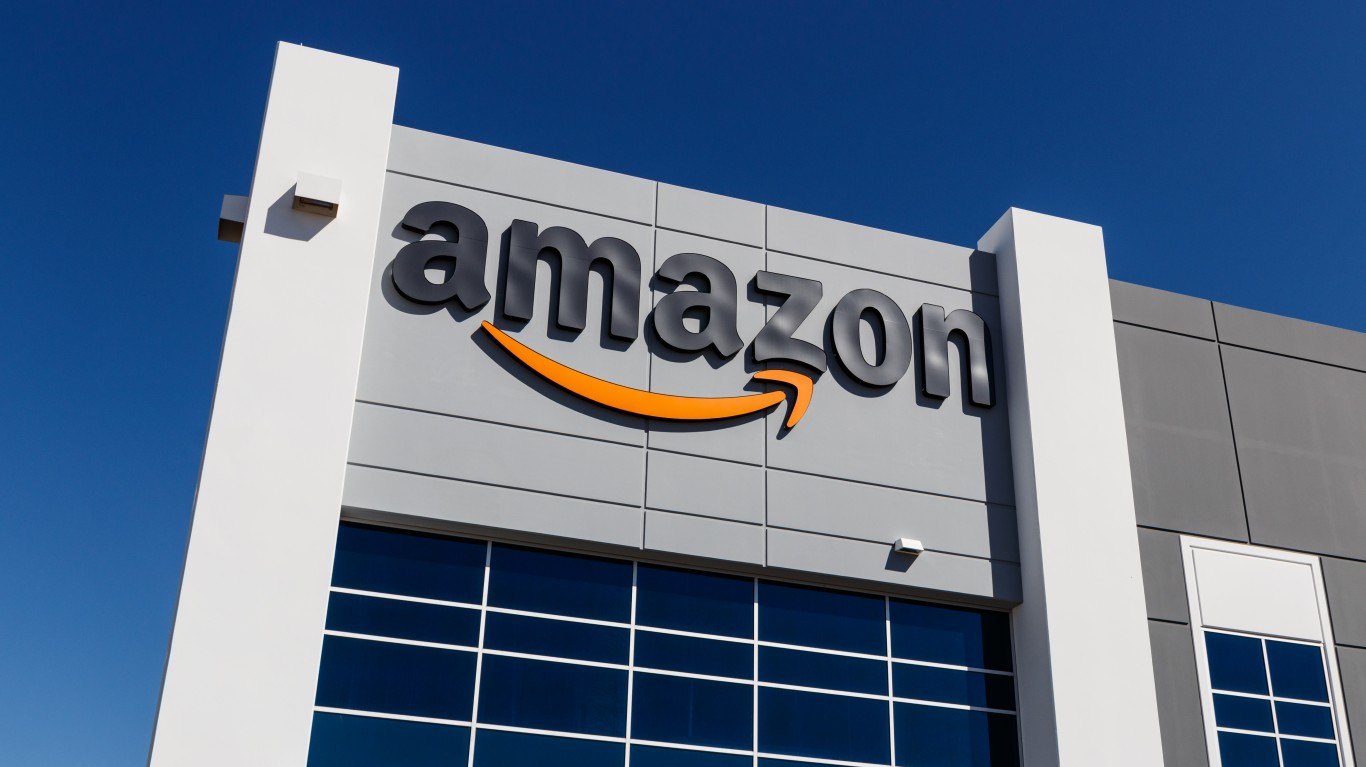
"Amazon.com Inc. ( NASDAQ: AMZN) has been one of the stock market's biggest success stories ever. The company had its initial public offering in May 1997 and traded for an astonishingly low split-adjusted price of just seven cents per share. Since then, the stock has gained over 289,400% as the company has grown into the linchpin of e-commerce. Since its inception, Amazon has become a mainstay in the Magnificent 7 and now commands the fifth-largest market cap of any publicly traded company."
"From 2014 to 2024, shares of Amazon surged by more than 1,025%, from $19.94 to $223.75. A considerable amount of that gain came between March 2020-coinciding with the arrival of the COVID-19 pandemic-and last year. From March 13, 2020, through the end of December 2024, the stock climbed from $89.25 per share to $134.50, a gain of 150.70%, as the company became the focal point for sourcing materials during lockdowns. Over the past decade, revenue increased from $89 billion to $638 billion, an astounding increase of more than 616%. At the same time, net income (profit) grew from −$0.241 billion to $59.2 billion, which translates to an incredible gain of 24,664.3%."
"However, for investors, what matters most now is how the stock performs going forward. Let's crunch the numbers on a 2030 price prediction for Amazon. Of course, no one has a crystal ball. But based on the macroeconomic environment, industry trends, Amazon's growth metrics, and other factors such as price-to-earnings (P/E) ratios, 24/7 Wall St. can make cases for bulls, bears, and a baseline."
Amazon's share price rose from a split-adjusted seven cents at its May 1997 IPO to a cumulative gain of more than 289,400%, becoming a core e-commerce platform and a Magnificent 7 member with the fifth-largest market cap. From 2014 to 2024, shares climbed over 1,025%, with a pronounced surge during March 2020–2024 as the pandemic shifted demand online. Revenue expanded from $89 billion to $638 billion and net income from −$0.241 billion to $59.2 billion over the decade. Pandemic-era sales pull-forward caused a 2022 setback. Future 2030 outcomes hinge on macroeconomic conditions, industry trends, growth metrics, and valuation measures such as P/E ratios.
Read at 24/7 Wall St.
Unable to calculate read time
Collection
[
|
...
]